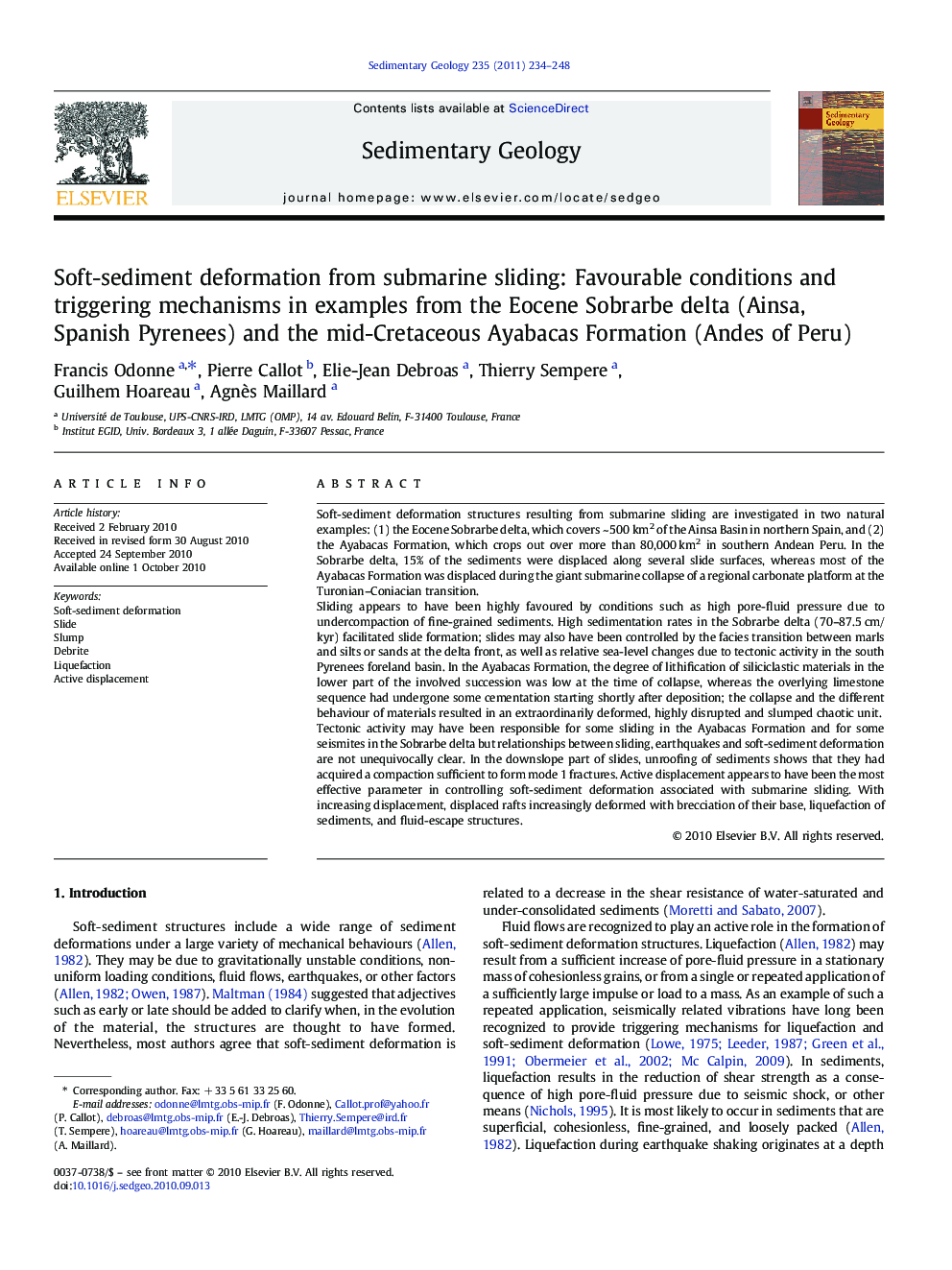| کد مقاله | کد نشریه | سال انتشار | مقاله انگلیسی | نسخه تمام متن |
|---|---|---|---|---|
| 4690244 | 1636112 | 2011 | 15 صفحه PDF | دانلود رایگان |

Soft-sediment deformation structures resulting from submarine sliding are investigated in two natural examples: (1) the Eocene Sobrarbe delta, which covers ~ 500 km2 of the Ainsa Basin in northern Spain, and (2) the Ayabacas Formation, which crops out over more than 80,000 km2 in southern Andean Peru. In the Sobrarbe delta, 15% of the sediments were displaced along several slide surfaces, whereas most of the Ayabacas Formation was displaced during the giant submarine collapse of a regional carbonate platform at the Turonian–Coniacian transition.Sliding appears to have been highly favoured by conditions such as high pore-fluid pressure due to undercompaction of fine-grained sediments. High sedimentation rates in the Sobrarbe delta (70–87.5 cm/kyr) facilitated slide formation; slides may also have been controlled by the facies transition between marls and silts or sands at the delta front, as well as relative sea-level changes due to tectonic activity in the south Pyrenees foreland basin. In the Ayabacas Formation, the degree of lithification of siliciclastic materials in the lower part of the involved succession was low at the time of collapse, whereas the overlying limestone sequence had undergone some cementation starting shortly after deposition; the collapse and the different behaviour of materials resulted in an extraordinarily deformed, highly disrupted and slumped chaotic unit.Tectonic activity may have been responsible for some sliding in the Ayabacas Formation and for some seismites in the Sobrarbe delta but relationships between sliding, earthquakes and soft-sediment deformation are not unequivocally clear. In the downslope part of slides, unroofing of sediments shows that they had acquired a compaction sufficient to form mode 1 fractures. Active displacement appears to have been the most effective parameter in controlling soft-sediment deformation associated with submarine sliding. With increasing displacement, displaced rafts increasingly deformed with brecciation of their base, liquefaction of sediments, and fluid-escape structures.
Journal: Sedimentary Geology - Volume 235, Issues 3–4, 1 April 2011, Pages 234–248